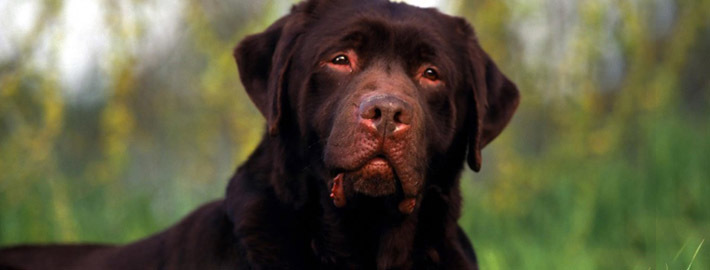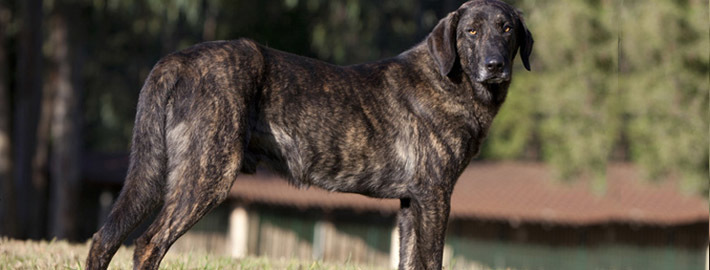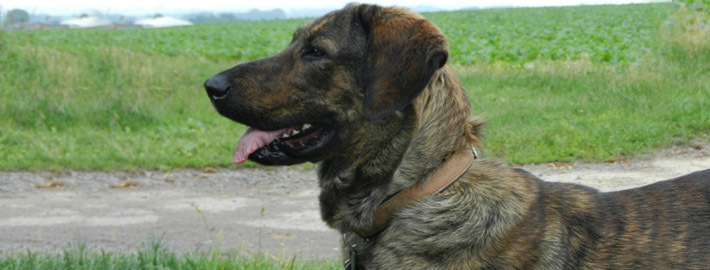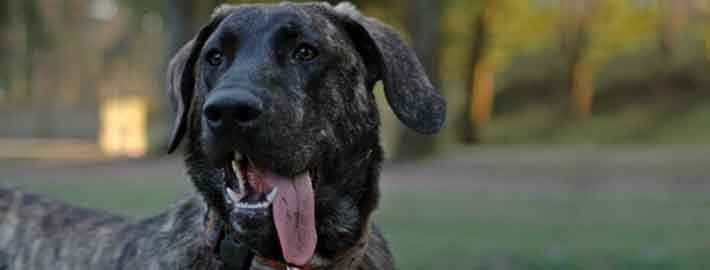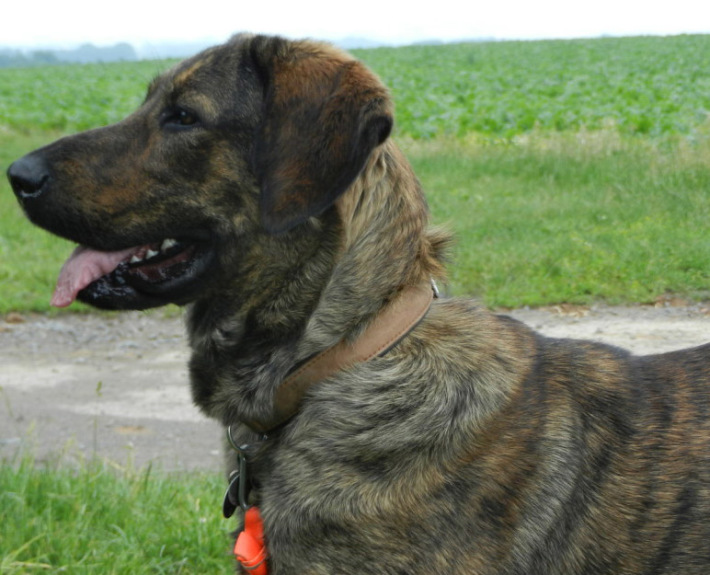What makes the Cão de Castro Laboreiro Unique?
While having a unique or rare dog variety as a pet might sound appealing to some people, prospective dog owners should always know what they are getting themselves into before committing to a new pet. After all, Cao de Castro Laboreiros are large dogs that require plenty of space, a task to perform, and an experienced handler in order to thrive.
Breed Groups
Page Contents
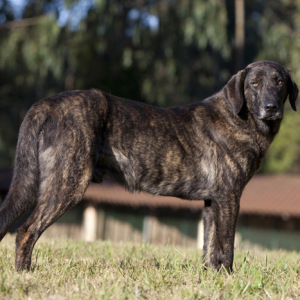
Is the Cão de Castro Laboreiro Right For You?
Cao de Castro Laboreiros typically get along quite well with members of their own families, including the children, but they can be somewhat aggressive towards unfamiliar people. Members of this breed typically live with the other animals that they are supposed to be protecting and constantly patrol their estates for threats to the safety of their charges. Anyone or anything a Cão de Castro Laboreiro does not immediately recognize will be watched from the moment he, she, or it enters the dog’s domain.
In 5 Words
- Flock Guardian
- Intelligent
- Dominant
- Respectful
- Brave
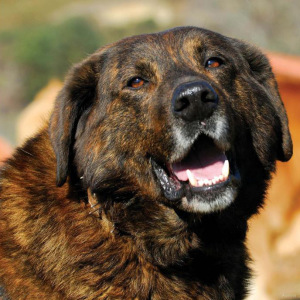
Characteristics
Learn About the Cão de Castro Laboreiro
Description
General Description
Cao de Castro Laboreiros are large dogs with powerful, rectangular bodies. While these dogs are considered to be a part of the mastiff family, they do not have the extremely exaggerated features that otherwise categorize the group. In fact, Cao de Castro Laboreiros often resemble Labrador Retrievers or German Shepherds. However, the former breed is not as standardized in appearance as the latter two varieties. In keeping with their purpose as working animals, Cao de Castro Laboreiro are hardy animals that don’t often put on a lot of weight. These dogs also have long, curved tails that are carried high but these appendages should not extend over the back of the animal in question. Members of this breed also typically move with an energetic, free-flowing gait.
Size
Males of this breed stand an average of 21.5 to 23.5 inches tall. Females are somewhat shorter at 20.5 to 22.5 inches in height. Dogs of both genders typically weigh somewhere around 45 to 80 pounds.
Coat
The most popular shade for members of this breed is wolf grey in light or dark shades. However, these dogs may instead have brindled fur with red and/or brown hairs showing up in their coat as well.
Short History of the Cão de Castro Laboreiro
This Portuguese breed hails from the town of Castro Laboreiro, which is located in the country’s far northern reaches near the Peneda-Gerês National Park. The shepherds in this isolated region had developed a particularly hearty breed of dog to protect their livestock from large predators. The ancestors of these canines are believed to have originally come from somewhere in Mesopotamia along with the livestock that they were created to look after. It is also fairly likely that shepherds of the Iberian peninsula used some of the ancient molosser breeds that lived in the mountains as part of the breed they created. As is often the case with many dog varieties, the documented evidence of the Cao de Castro Laboreiros existence only goes back a few centuries. These canines were first mentioned in Camilo Castelo Branco’s 1882 novel The Brazilian Girl from Prazens as being known for their fierce dispositions.
Once the large predators that they once hunted began dying off and farming methods improved, many Cao de Castro Laboreiros found themselves without a job or even a home. Some individuals unfortunately begun to pose the same threat to farm animals that they were created to resolve. However, a number of the dogs remained in good hands. In 1914, a veterinarian created the first standard for the breed. Cao de Castro Laboreiros were recognized by the Portuguese branch of the Fédération Cynologique Internationale (FCI) in 1935 as breed number 150, which became part of the Mastiff group. The dogs are likewise recognized by the United Kennel Club (UKC) as part of their Guardian Dog group. Yet Cao de Castro Laboreiros are certainly not as common as a quick internet search would allow people to believe. Although there are a number of individuals that advertise the puppies that they sell as members of this rare variety, prospective pet owners should exercise caution as there are only about 500 of these dogs actually in existence today.
Temperament
These dogs have fearless, take-charge personalities that serve them well as livestock guardians. Cao de Castro Laboreiros typically get along quite well with members of their own families, including the children, but they can be somewhat aggressive towards unfamiliar people. Members of this breed typically live with the other animals that they are supposed to be protecting and constantly patrol their estates for threats to the safety of their charges. Anyone or anything a Cão de Castro Laboreiro does not immediately recognize will be watched from the moment he, she, or it enters the dog’s domain. They also will not let any sort of threat approach their flock. Even so, most Cão de Castro Laboreiros will give a warning bark if something goes wrong.
Caring for Your Cão de Castro Laboreiro
General Health
There are no specific health problems that have been observed in the breed thus far, but that does not mean that these dogs are immune to ailments commonly seen in other canines. However, some individuals that are currently classed as Cão de Castro Laboreiro could actually have mixed ancestry and possess some of the genetic problems of their other forbearers. Of course, prospective owners should only buy puppies from reputable breeders who test the parent dogs for health issues before allowing them to have puppies.
Care
Daily
These dogs require a tak to perform, such as serving as a livestock guardian, in order to be at their best. If this is not the case, members of this breed should be taken on long, daily walks. They also require plenty of space where they can run about and play. Therefore, it is no surprise that Cão de Castro Laboreiros cannot live in apartments.
Weekly
All dogs, including members of this breed, should have their teeth cleaned on a regular basis to keep them in good oral health.
Monthly
Like other dog breeds that are kept as pets, Cao de Castro Laboreiros need to be given parasite prevention medications once a month to help keep harmful organisms at bay.
Grooming & Bathing
Members of this breed have very basic grooming needs and only need an occasional brushing to keep them looking tidy. Routine maintenance for this breed includes regular toenail trimming and ear cleaning. Cao de Castro Laboreiros typically spend most of their lives outdoors so there is no documentation on their shedding habits, but it is likely that they do shed heavily.
Exercise & Training
This breed is not suitable for the average pet owner, much less amateurs that have never owned a dog before. Prospective owners should be aware that Cão de Castro Laboreiros will only obey their owner’s commands and make their plans accordingly. However, members of this breed must to receive their instruction from experienced teachers. These dogs also need a firm hand when it comes to making sure they obey the rules of their households and polite society. Gaining the respect of a Cao de Castro Laboreiro is an essential element in obtaining its’ obedience. Harsh instruction method are incredibly counterproductive since dogs that fear their owners are unlikely to listen to them.. All the same, even with the best of training, Cão de Castro Laboreiros can be a difficult breed to manage.

